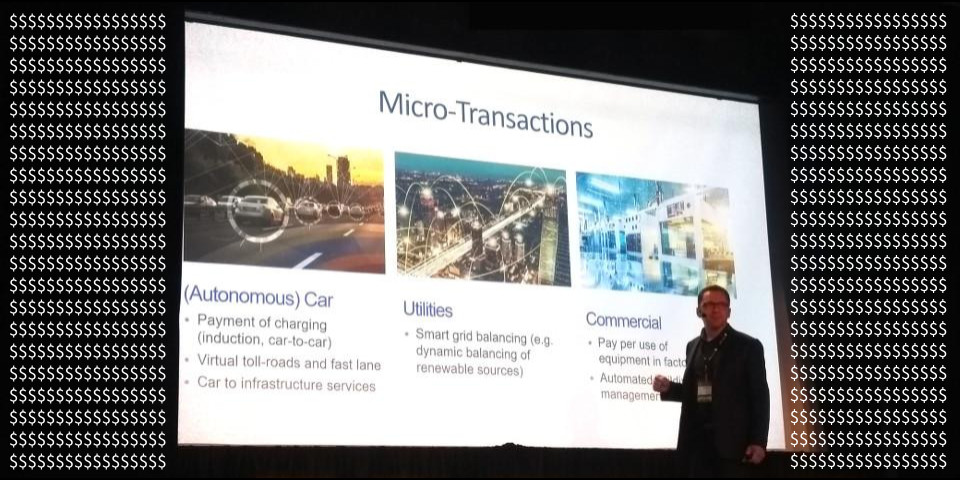At McRock Capital’s annual IIoT Symposium, which took place this week, a panel of experts was asked:
Does the ideal architecture for Smart Cities look more like the Internet or more like an operating system (ex: AOL)?
Panelists Kurtis McBride of Miovision and Dan Riegel of Sidewalk Labs both argued for the former. —But wait.— The Internet was primarily government-funded and took decades to build, whereas both Miovision and Sidewalk Labs are venture-backed companies, and, critically, Alan Kay reminded us last year:
“I’ve never heard of VCs being interested in time frames like that.”
Can we therefore expect the entrepreneurial vision to prevail?
Three years previous, on the same stage of the same symposium, Alicia Asín of Libelium addressed this exact predicament through a comedic caricature of an investor pitch: “Imagine it’s the 1800s and one is raising funding to build a railroad.”
Entrepreneur: We’re seeking investment to connect two cities by rail.
VC: Perhaps instead you could build a pay-per-use entertainment system for the rail passengers. We’re seeing real potential in that space.
Entrepreneur: There are no rail passengers to entertain. That’s why we’re building the railroad.
VC: Well, we’re not interested in investing in infrastructure so good luck to you.
The room of entrepreneurs and investors laughed. Definitely relatable to those on both sides of the table then as much as it still is today. Yet it is clearly in our collective interest to establish the infrastructure on which immense value can be created, enjoyed and monetised. So how do we get there?
How about a monetisation model so exciting as to justify the means?
Micro-transactions. This was the title of what we’d argue was the most important slide of Maciej Kranz‘s keynote presentation, which is featured at the top of this post. And while this being an IIoT conference, he focused on the massive potential for automotive, utilities and commercial applications, it’s not difficult to extend this to The Pervasive Sharing Economy at large.

Here’s our own microtransactions slide from a recent pitch deck. Take the familiar example of walking into a brick-and-mortar retailer: you might wish to exchange information about your presence and intent for an unprecedented customer experience. The real-time data may need to travel from a mobile device over in-store infrastructure which may be owned/operated independently of the real estate before reaching first or third-parties that together deliver the personalised experience. There are countless potential data paths involving a heterogeneous mix of stakeholders (the railroad analogy applies well here too). The micro-transaction model provides a real incentive for each actor to benefit from their work in moving the data where it can create value: everyone gets a cut of the action.
While the underlying architecture may seem complicated, it nonetheless closely resembles that of the Internet. And that’s what Maciej Kranz’s (arguably) second-most important slide reminds us. By embracing open and collaborative practices, most of which are well established, this all comes together, as did the Internet.

Think of every traffic light, digital urban asset and WiFi access point as infrastructure for micro-transactions. From this perspective, Miovision, Sidewalk Labs and Cisco are each contributing to the Internet-like architecture that they champion, provided they embrace the tenets of the slide above.
How then do we hasten the smart city revolution and a ubiquitous Internet of Things? Establish the business of micro-transactions. Once the dollars (bitcoins?) start flowing, the underlying micro-transaction infrastructure establishes itself as a solid investment opportunity!
